I looked at the clock. 3:23 AM. It was time to turn in, especially since I got up at 2:45 AM.
The day before.
Occasionally nature gangs up on us and we have interminably long days. There’s just so much to do; first, we have the day-to-day, and then, the big jobs—and then, the weather throws us a curve ball. Folks often ask me what time of year it gets easier. I just smile and change the conversation. Certainly, we get tired, but we still believe in what we do. It’s OK. And most of the time, it is good. Really good. As far as job satisfaction, I think all of us on the Alderspring team would rate it high. We get things done. We are surrounded by beauty. We have a mission.
The big job this week was moving approximately four hundred head of cattle from our Tendoy ranch to their winter home, here in the Pahsimeroi. If you remember, Tendoy was the ranch we bought a few years ago that was a run-down potato farm. The dirt was ashy dust in the wind, and the place was covered with pigweed. At first, when Caryl and I looked at it I wasn’t certain we had enough vision to convert that place into soil. Somehow, we were hoping to run cattle over there for the grass season in a few years. But after three years of cover cropping and limited grazing, we built enough soil health to raise good grass on. This past spring, the two hundred newest moms and their young calves went there for the summer.
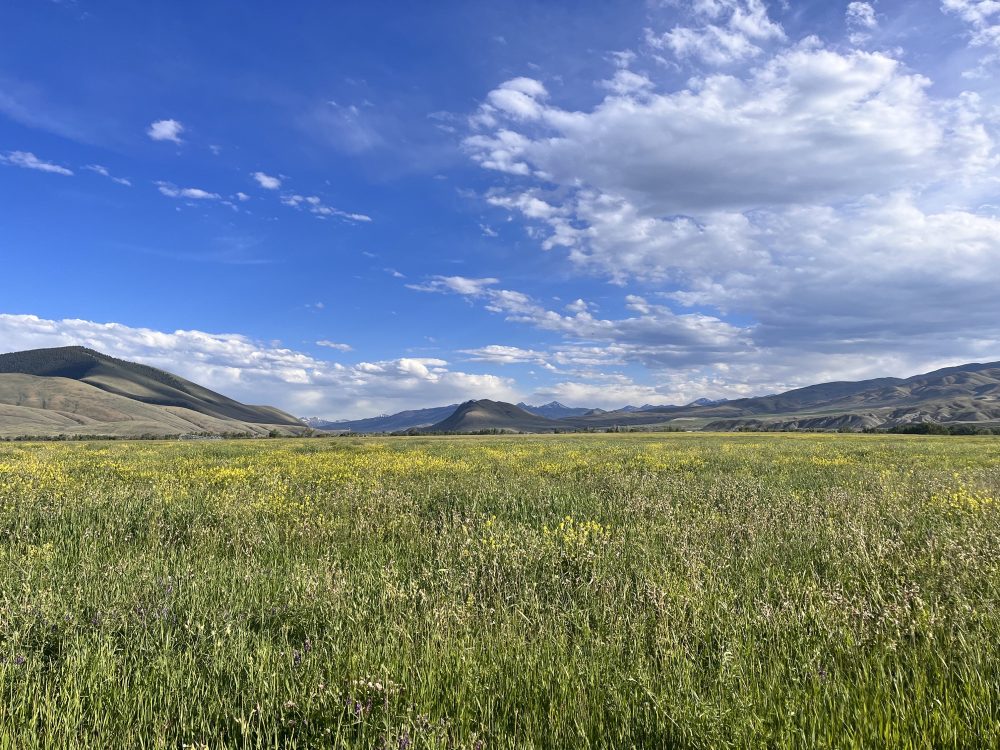
Long time Alderspring hands Scott and Rebecca and their tribe of three little humans would summer the “pairs” there in Tendoy on the expansive piece of ancient glacial outwash above the long Lemhi Valley. The views were expansive both up and down the rift, surrounded by 10,000 foot peaks. The ranch’s grassy hills reared up suddenly and spirited themselves away to lofty heights along Montana’s border with Idaho, also known as the Continental Divide. Caryl and I thought it would be a good place for summer, and the ground needed the biological input of animals. They would inoculate the soil with what it needed.
As soon as this year’s newborn calves were old enough to handle it, it was time to brand them. Dear Reader, know right now that I used to hate branding calves. There’s obvious pain involved for the young calf—as you can well imagine. If you don’t know, it is literal flesh burning in a pattern that is unique to the ranch and our ranch only in the entire state of Idaho. Our “iron” is a very distinctive E bar E, which as you might think, stands for Glenn and Caryl Elzinga. It was more like destiny. The first ranch we bought came with the brand; it turned out to be one of the early ones in the state of Idaho, dating back to the late 1800s.
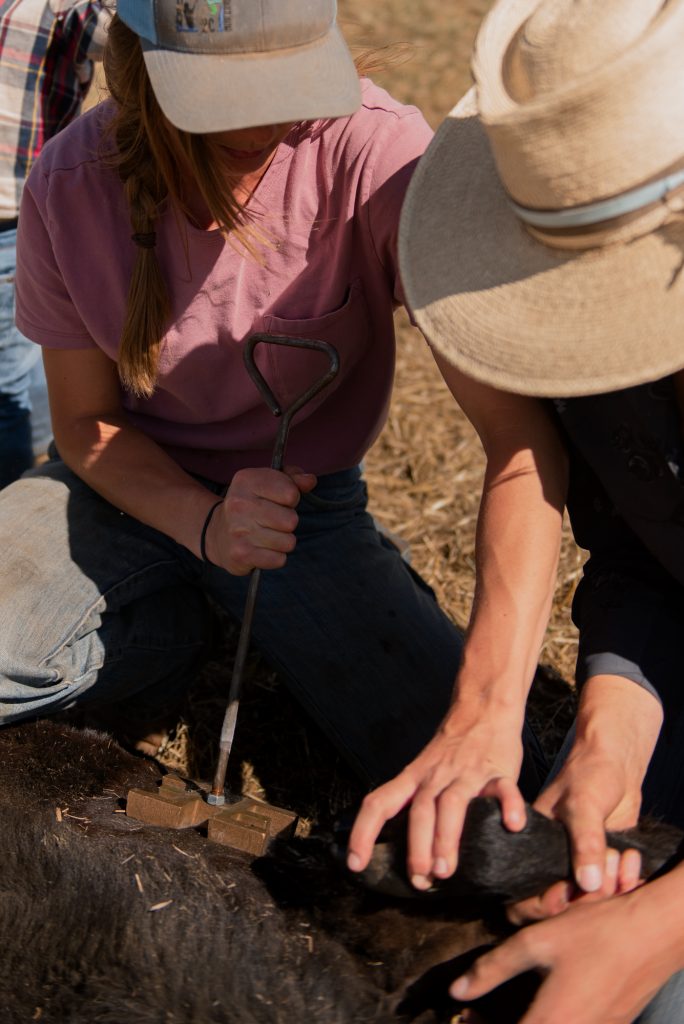
But the mark is the only legal way we can claim our calves in the wide open of the West where a cow can easily venture far from home. I recall one calf that showed up at a ranch about 2 hours’ drive away in the wide sweep of the Horse Prairie in Montana. I picked up another set of 9 cows and their babies in a remote isolated ranch corral in the high country surrounded by a thousand square miles of National Forest–about an hour and a half away. Both were identified by ranchers that I hardly knew or heard of, but they looked up the brand and knew who to call. A cow or a calf can travel miles and miles away from the ranch if they get through the fence, and the brands will bring them home if the wolves don’t find them first.
Without a brand, anyone criminally minded can whip out a pocketknife, cut off my numbered ear tags and after that, our black-hided steer will look dang similar to about 11,000 other black steers in our valley. Cattle rustlers can’t stand the temptation. One gooseneck stock trailer pulled by a pickup truck, loaded up at night by a good (actually quite bad) hand with a horse would be easily worth $20K. For those of you who like details, a good horse would readily jump in the trailer with the stolen calves. One trailer load, and thief makes off with the living goods.
Not bad for a night’s work. Stack several of those nights up over the summer in the remote ranges of Idaho, and they’ll have enough to support their bad habits.
In the old days, the vigilante justice code stated that with such rustling, the perps got to try on a rope necktie under a big cottonwood tree (oaks don’t grow here). One of the former owners of our Hat Creek Ranch was one such gent, but they never could catch him. The foundation of his livelihood was that he was handy with horse and rope and could start a little branding fire anywhere. He was too sneaky to be caught, but one day he just disappeared. No one knows where he went off to. Maybe he got concerned for his skin and lit off for the likes of California. But maybe some ranchers took matters into their own hands. With all the wild animal predators we live with in these hills, there’s not much chance of finding sun bleached bones.
They’d get eaten within a day or two, interrupting the trail of evidence.
So, we brand our cattle, but now, I’m good with it, and it’s because we started freeze-branding. We just hit them with a super cold brass branding iron, to the tune of eighty below zero cold. It freezes the hair follicles instantaneously, and when we do that, their ability to color the hair is gone for as much as 15 years. Instead of black, the hair becomes white. There is still living tissue there—it is not frostbitten.
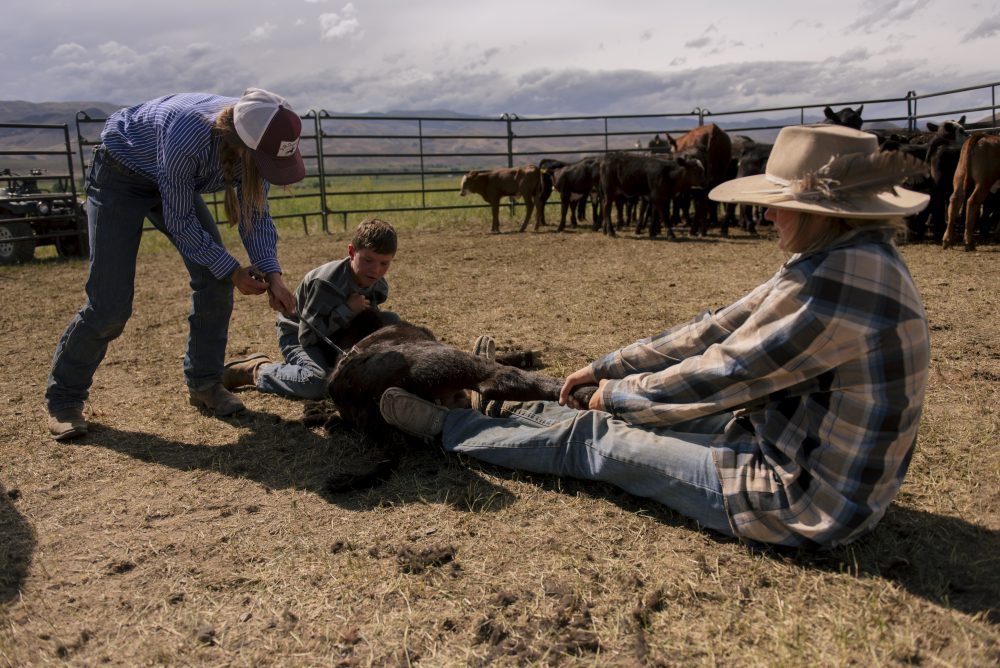
It is more time-consuming. We must shave the hair in the brand area so the cold transfers quickly (wonderful job for little kids). There are signs of obvious short-term discomfort, but I don’t observe signs of real pain–no bawling or struggling once caught. We do the whole thing in the summer on green grass, with a crew of people in a temporary panel enclosure with a couple horses and about twenty calves in batches. The smaller ones we can just grab on foot—the 20 something intern guys really like that—even though they often get pretty beat up by a kicking calf as they wrestle it to the ground. It’s pretty common to see at least one intern limp away after getting kicked “where the sun don’t shine.” The larger ones we rope with the horses and the ground crew “mugs” them once caught, holding the calf down while we tag and brand as quickly as we can. The calf’s mom is right there, watching, and after the young one gets branded- in a minute or two- the calf is released to rejoin with mom (the calves call out more from being grabbed or roped and tagged than they do from being branded).
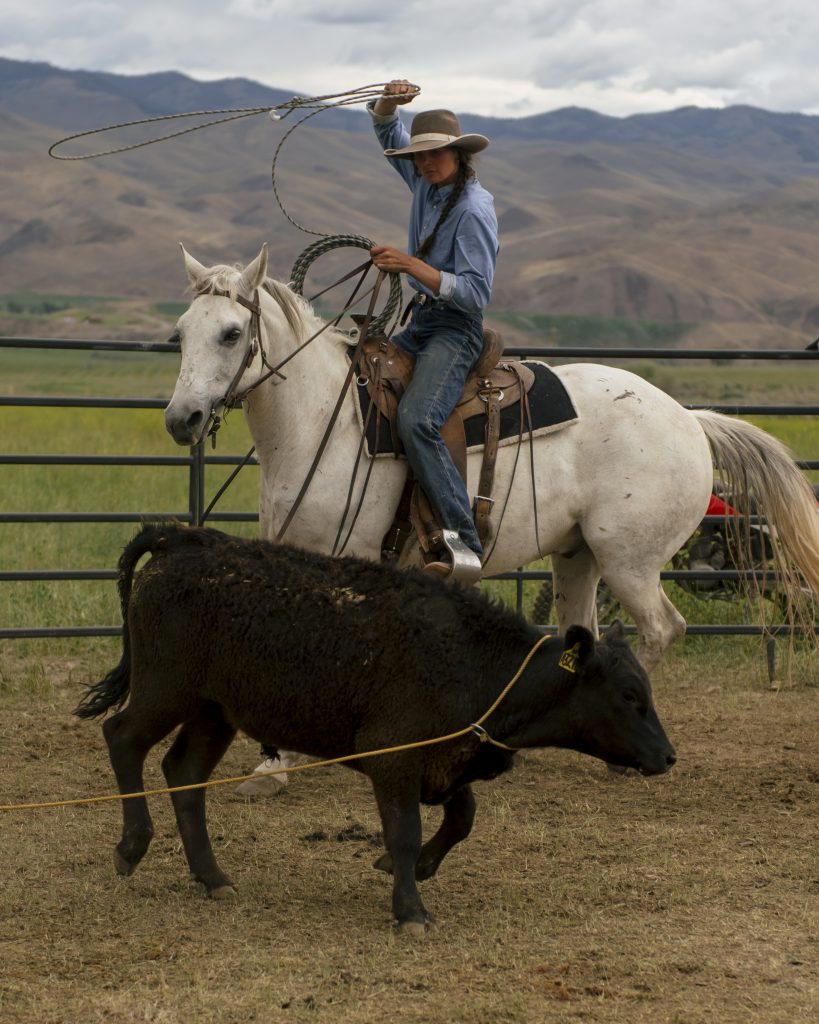
The relief from stress is night and day compared to hot branding. Even the crew is relieved, because seeing any stress on our animals—our charges and livelihood—is not OK with any of them. My crew and daughters have poured heart and soul into making those animals thrive. We don’t yell at animals around here. Or shock them with hotshots. I could convince someone of this, I think, from a purely commercial point of view- stressed animals don’t thrive and they don’t gain weight. But for me, quiet handling just always seemed right.
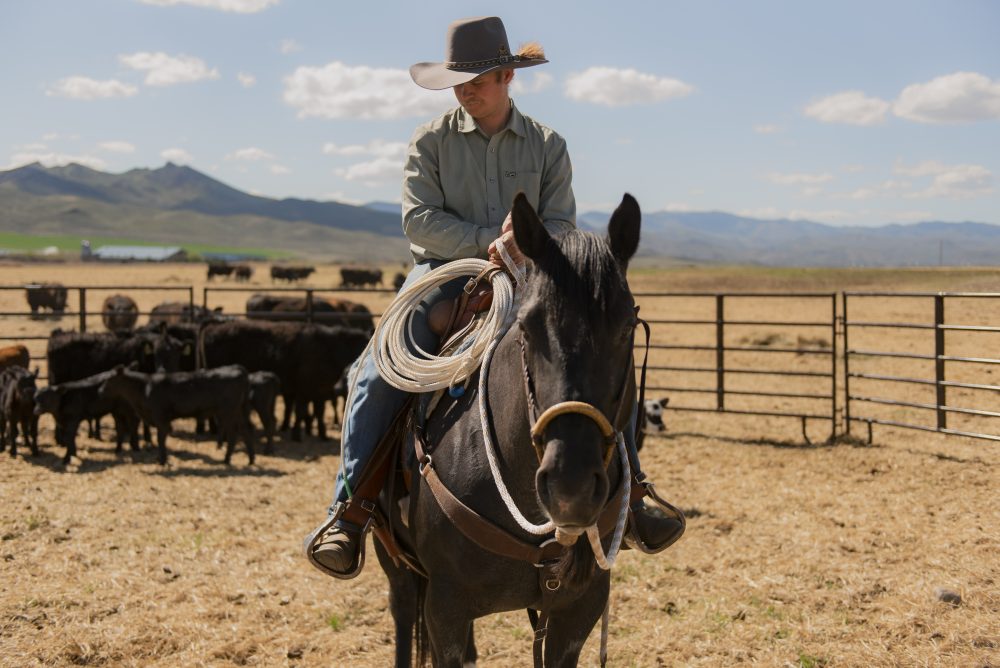
After that, we can “turn them out” on grass, mothers and calves, knowing that our mark is on them. The cows and calves get a gooseneck trailer ride to the Tendoy place, and the yearlings and two-year olds hit the high country of Hat Creek.
And now, after a great grass year, they have all returned. A couple got out, but their brands brought them back; neighbors saw our mark and returned them. For the most part, everyone follows the unwritten code of the west–if they return my cattle, they know I’ll return theirs (indeed I loaded three head of a neighbors yesterday).
As I look across the big meadows from my office window, light snow drifts downward. Through it, I can see the shapes of hundreds of contented black cattle, heads down, grazing the grass diversity that we set aside for them for just this time. They spread as far as my eye can see, which isn’t that far because of the flurries. But I am now content; the same restlessness that I felt all summer, and every summer for that matter, is finally quieted.
It’s because they’ve all come home.
Happy Trails
Glenn


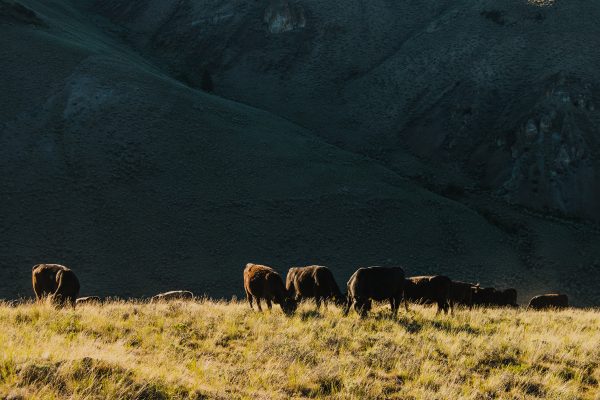




Leave a Reply